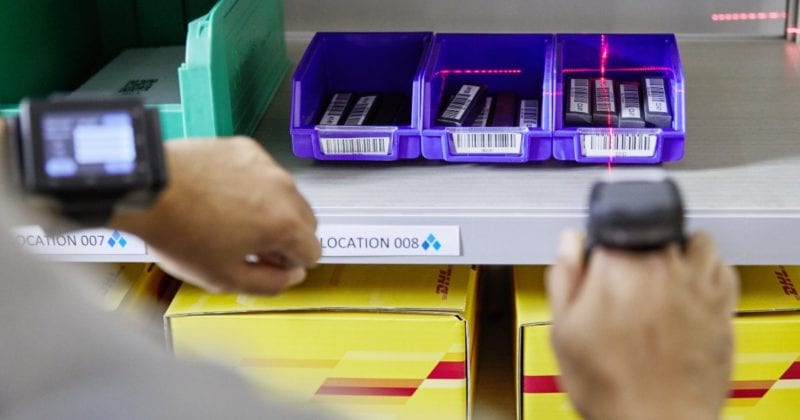疫情迫使數位消費者改變購物習慣。許多人花錢買生活必需品,造成電商和實體零售店面缺貨。他們顛覆可預測的模式,轉向新商店、通路和產品線購物。
事實上,早在疫情衝擊前貿易活動已經漸趨遲緩,主要源自於中美貿易緊張對經濟成長造成的影響。2019年12月,DHL全球貿易晴雨表(Global Trade Barometer)顯示全球貿易微幅衰退,主要受到中國、德國、日本、南韓、英國與美國的負成長展望拖累。
世界貿易組織(WTO)報告也指出,2019年世界商品貿易量微幅減少0.1%;世界商品出口額減少3%,來到18.9兆美元。
WTO經濟學家認為,新冠疫情對貿易與產出造成的進一步衰退影響,可能超過2008-09年全球金融危機引起的蕭條。
新冠疫情引發的後疫情效應
負面展望已對預算規劃造成負面影響,尤其是在倉儲方面採取先進先出的企業。負責供應鏈諮詢與企業轉型服務的DHL Consulting(DHLC)事業部資深供應鏈專家Sharad Bhat指出,新冠疫情已經導致許多倉庫數位化投資延遲,因為大部分企業目前關注的是自由現金流量,延緩「非必要性」投資。
DHL供應鏈亞太區營運長暨資訊長Steve Walker補充說,一般而言,後疫情時代下,整個供應鏈的倉儲與物流自動化將出現明顯的推力。
「新冠疫情中可以發現,企業需要更具彈性和更敏捷的供應鏈,可依據個別與地理需求迅速調整。而這正是自動化的優點」,他說。
新加坡企業發展局運輸與物流主管Law Chung Ming表示,值得注意的是,數位化下,儘管疫情持續延燒,仍能持續支援商品和必需品的運送,企業已經在此投資上看見成效。
「科技不只是有助於生產力提升,在疫情期間也能維護員工安全」,他說。
降低成本與提高生產力這兩點改善措施尤為關鍵。DHL供應鏈一直秉持著所有科技與數位化的升級必須盡可能富有彈性,讓更多客戶能夠使用。
2016年DHL在新加坡成立高級區域中心(Advanced Regional Centre;ARC),與集團的亞太創新中心(Asia-Pacific Innovation Centre;APIC)座落相同地點。
APIC是亞太區第一座創新物流服務中心暨DHL全球第三座DHL創新中心之一,作為新興物流相關科技的測試台,展示重塑供應鏈的創新最先端。
ARC新創的多客戶自動化系統使用130個機器人裝置,揀選與存放來自26層、7.2萬個位置的商品,讓揀貨效率提高20%,使用空間比傳統倉儲減少40%。對於位在土地稀少國家及高人口密度城市,尋找更優異倉儲模型的公司而言,此系統極具吸引力,在新冠疫情期間也更受矚目。
自動化與數位化的持續投資
「但是想當然,部分產業比其他產業更想搶先一步。」在亞太地區,自動化與數位化的推動可能稍微遲緩。
其他成本更高的機器人,像是貨到人機器人以及輔助揀貨機器人,則按照客戶預算及長期策略而定。
Walker說:「區域的低工資成本有時讓我們更難說服客戶改善科技,尤其考慮到合約期間通常持續2-3年左右。」
「像是日本及澳洲等勞工成本較高的國家,機會更多,我們預估有些客戶會改變策略,在供應鏈上使用更多科技,尤其是在新冠疫情期間。」
Walker指出,加速倉庫數位化目標也存在人性面。「改變管理階層永遠只是個因素,改變程序與人力有關—相關人士的參與,是我們改變與轉型倉庫運作的關鍵。」
「我們也無法忽略系統的實體整合,我們必須非常審慎考量數位連結網絡的IT安全。最重要的是我們的網路連結,不能讓我們容易受到攻擊。」
今年年初,DHLC完成針對全球領導汽車製造商的倉庫數位化研究。研究目的在評估多項數位化計劃,以及在中國倉庫執行這些計劃的優點。關鍵結論為何?汽車製造商必須考量當前科技的成熟度,以及發展全方位數位藍圖的獨一無二經營組合。
追蹤投資產業的投資研究顧問公司Robo Global發表一份報告。該公司的投資指數,11%關注這些公司,包括在日本提供廠房自動化與物流服務的大福公司(Daifuku)。
ResearchAndMarkets.com發表的另一份報告,分析北美、歐洲及亞太地區的倉庫自動化市場,預測此產業在2025年底前達到11.6%的CAGR複合年均成長率。報告指出「全球電子商務快速竄起,預期對縮短貨運時間的期望」以及「提高產業對倉庫效率增加的關注,降低勞工資本支出」。
隨著市場需求及資金可能持續流入產業,看起來後疫情時代會有進一步的倉儲自動化與數位化發展。不過,公司會警惕不過度擴張財務,主要集中投資在疫情期間證實有明確效益的部分。












 繁體中文(台灣)
繁體中文(台灣)